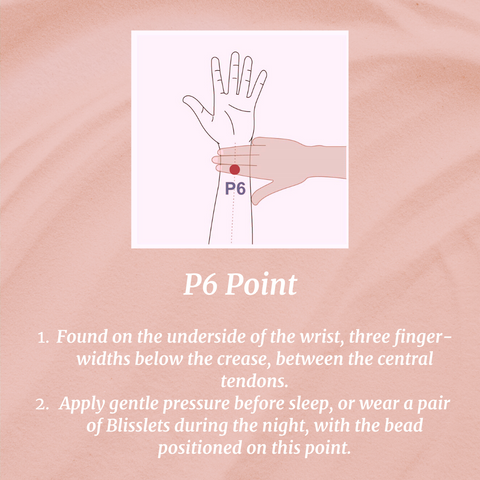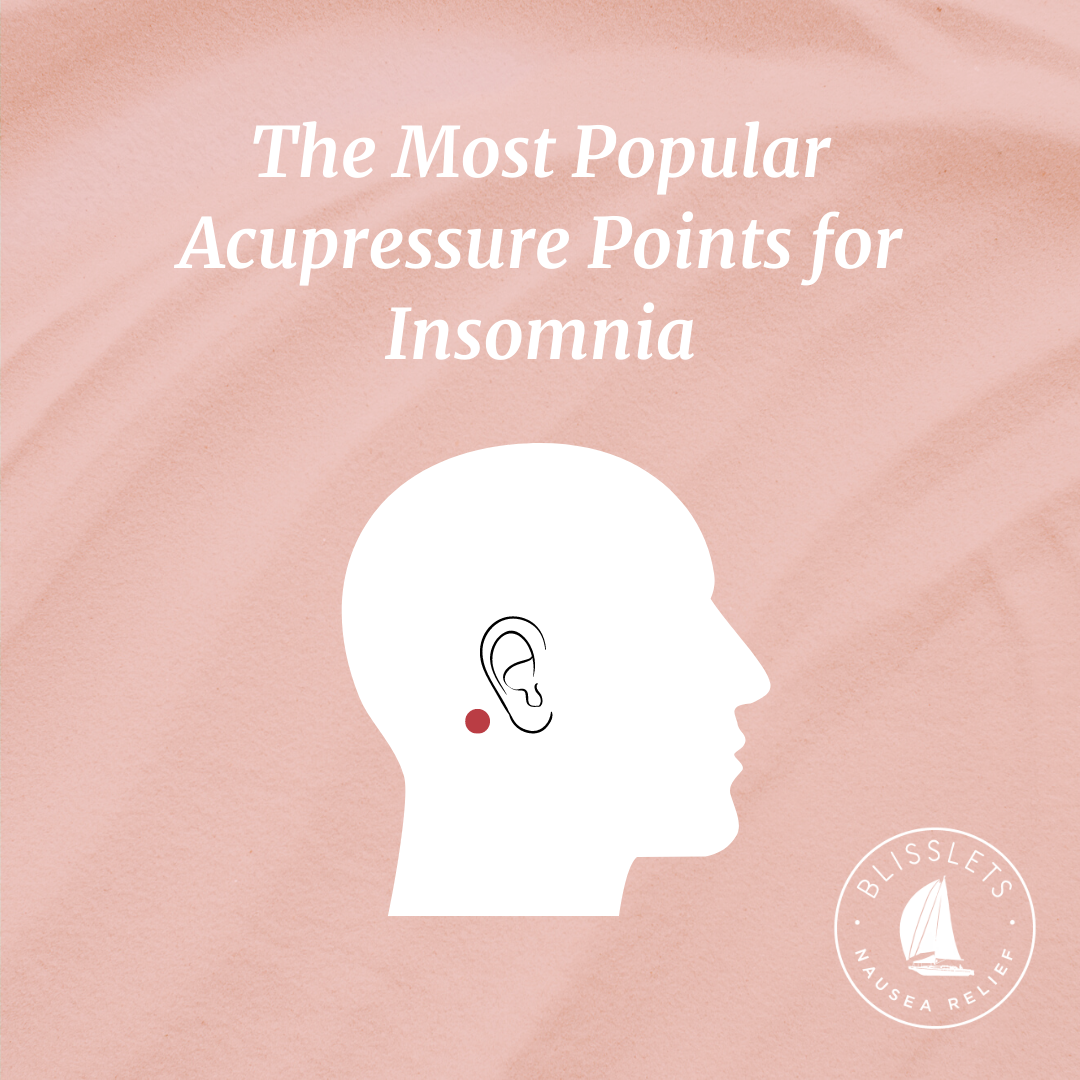I know it, you know it, we all know it: getting quality sleep is important, the cornerstone of any wellness routine. And it's not just the fact that not sleeping enough will make you feel like a slow-motion zombie with a hangover. The fact is that the effects of poor sleep are no joke. A wealth of research has shown that sleep deprivation can increase your risk for obesity, diabetes, heart disease and hypertension, anxiety, and depression.
Doesn't sound fun, but you didn't need me to tell you that. The question is: what do you do if you're struggling?
First things first: chronic sleep deprivation is a serious condition, so you should consult a medical professional who can help you get to the bottom of the problem. All I want to share in this post is a few tools you may not have heard of, which can naturally support your overall strategy for achieving better sleep.
Specifically, I want to take a look at four acupoints that have been shown in promising clinical studies to help promote better sleep without drugs or side effects.
Four Acupoints to Naturally Relieve Insomnia
HT7 or Shenmen Point

The HT7 point, also known as the Shenmen point in traditional Chinese medicine, is found on the underside of each wrist, just below the wrist crease on the side of your pinky finger. Stimulating this point with acupressure or acupuncture has been shown in various studies to be effective in relieving insomnia.
The International Journal of Nursing Studies, for example, published a controlled study conducted on 50 residents of long-term care facilities who were suffering from insomnia. The study compared a group receiving acupressure on the Shenmen point against a control group that received only a light touch on the same location, concluding that "acupressure on the HT7 point may improve insomnia for up to 2 weeks after the intervention."
Likewise, a study of Alzheimer's patients suffering from sleep disorders found that using HT7 acupressure was correlated with a number of positive results. As the study explains: "After receiving the acupressure treatment, patients saw a significant decrease of sleep disorders. The number of hours of effective sleep was perceived as increased. Furthermore, the time necessary to fall asleep decreased significantly and also the quality of sleep increased. Additionally, also the quality of life was bettered."
To try HT7 acupressure for yourself, you can stimulate the acupoint manually every night before bed, or you wear a pair of Blisslets through the night, with the acupressure bead positioned over the location shown in the diagram above.
KD3 Point

The KD3 point is another acupoint for insomnia that has research to back it up. This study from the International Journal of Nursing Sciences looked into the effectiveness of acupressure using the KD3 and HT7 points, finding that "acupressure can lower [blood pressure] and effectively improve the sleep quality in middle-aged and elderly patients with hypertension."
While the study was small, looking at 75 middle-aged and older adult participants with hypertension, its findings are in line with many other such studies that have shown positive effects. Perhaps most importantly, take note that you can use acupressure on the KD3 and HT7 points together, especially if you wear a pair of Blisslets to activate the HT7 points on your wrists, while applying pressure with your fingers to the KD3 points before bedtime.
P6 Point

I have to confess: the P6 point is my favorite and I'm totally biased towards it!
Why? Not just because it is the main wrist acupressure point that is most commonly used with Blisslets, but also because it is probably the most studied of these points, with research showing it as being more effective than placebo for nausea, insomnia, and anxiety. We've actually compiled a whole other post with links to clinical studies supporting its use for:
- Pregnancy nausea
- Motion nausea
- Visually-induced nausea
- Post-operative nausea
- Chemotherapy nausea
- Anxiety among soldiers
- Insomnia among adolescents
You can read that post if you want to follow up on all those uses, but for the purposes of this article, I'll just share the one relevant to insomnia. In that study, adolescents who were struggling with insomnia wore acupressure bands through the night over a period of six months. During that time, the participants using P6 acupressure improved their sleep scores significantly. The study concluded that "acupressure is a noninvasive, safe, and effective method for the management of insomnia in adolescents, with good compliance and no adverse effects."
An Mian Point

You can find the An Mian points on either side of the neck, at the point where the neck meets the jawline. In traditional Chinese acupressure and acupuncture, these points are recommended for helping relieve insomnia.
To try out the An Mian points, stimulate the location for 10 to 20 minutes before getting in bed.
There is research suggesting that a treatment regimen that includes An Mian points in conjunction with meridian acupoints is more effective than meridian acupoints on their own. However, studies on the An Mian point conducted so far have been small and relatively few in number compared to some of the other points we've seen, so more research is needed in order to draw hard conclusions. However, it's another option to try out and see what conclusions you can draw for yourself.
I hope you can try out these points to see which of them are the most helpful for you, and that you can soon be getting the great sleep you deserve!
Want to make targeting your pressure points for better sleep easier? Try Blisslets today with our 100% satisfaction guarantee.

